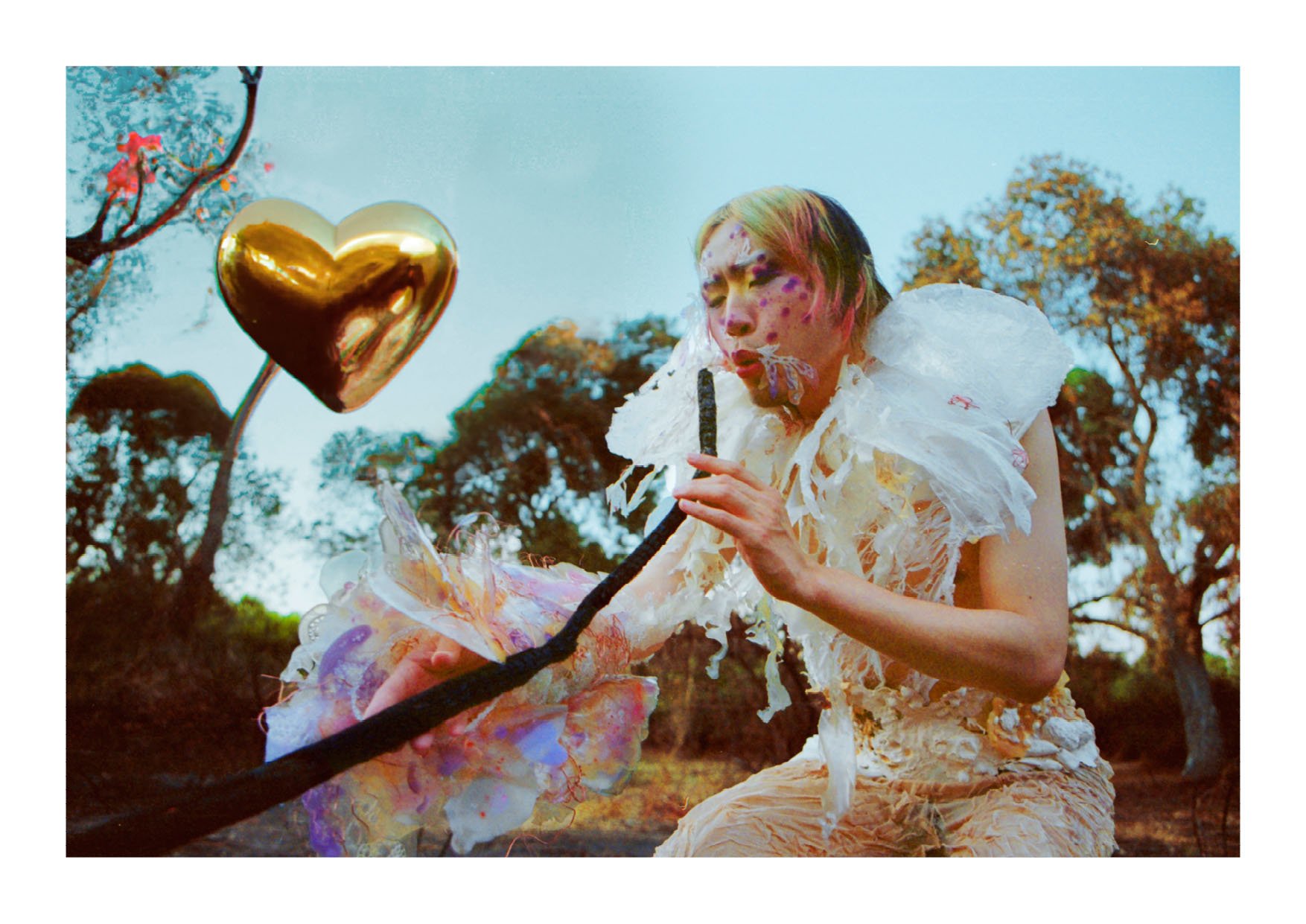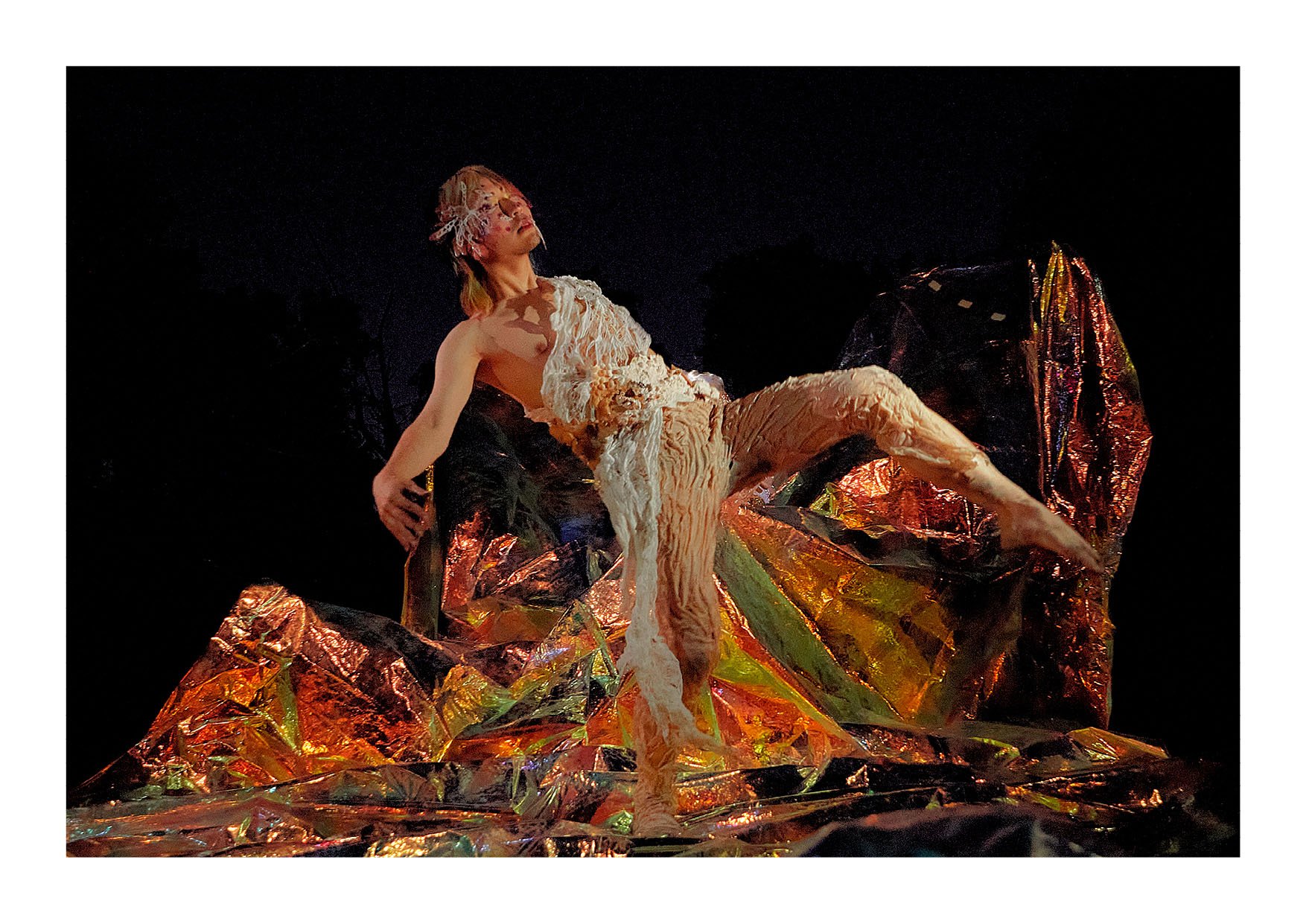Symbiotic Futures
As a consequence of accelerated climate change, species have been forced to create new forms of survival methods to adapt to extreme habitats. Alliances with other life forms have emerged, and new interspecific relationships are appearing, such as those of Leafy Seadragon.
A story by Raquel Buj
Leafy Seadragon is a unique interspecies, found at the intersection of a fish, a plant, and a human. They move slowly, subtly, floating like seaweed in the middle of an urban forest. They propel themselves thanks to an almost invisible fin at the edges of their neck and tail end. They are mysterious and solitary beings, but sometimes they can be seen accompanied by other close and friendly species, such as the Seahorse.
Despite their name, they do not spit fire like other dragons, nor do they have wings, although they can fly thanks to magic. They worry about the current climate crisis. They watch over the skies, bring rain, and observe the state of the rivers and streams, as water spirits do. They are wise, kind beings, willing to take care of the forests, seas and cities.
They are natural caretaker interspecies. In turn, they give shelter to about 120 eggs deposited in their abdominal belt by other found species. After a few weeks, the eggs hatch, they turn orange and pinkish, and a thin and shiny outer structure protects them. The egg jewel rises towards trees, algae and rocks. Once there, they transform; they are now free to inhabit rocky sites, sea grasses and urban forests.
Sometimes this freedom is dramatically cut short. Leafy Seadragons are exposed to very stressful situations. They feel that their habitat is constantly threatened by what they call environmental predators. Certain destructive human behaviours, such as pollution and industrial waste, are behind some of the fires and the severe droughts and floods that stalk this one-of-a-kind interspecies. The last extreme heat wave was about to carry away the Leafy Seadragon forever.
After last July’s heat wave, Leafy remains immobile. Lacking water and nutrients, their skin turns whitish. Exhausted on a burned tree, they reserve their strength until they can float again over the urban forest.
After the first breath, their internal survival mechanism is activated. They begin to build their own nest, a tailor-made suit that protects them from predators. They recollect materials from the site that they meticulously join with their saliva: algae extracts, mineral powders, dried fruits, natural latex, and some burnt electrical wires and textiles. They cover themselves with their new bio-fabricated environment. The boundaries between their body and the outside melt away.
New interspecies begin to sprout subtly in this envelope. Leafy can skillfully modify their skin color to get closer and empathize with the new inhabitants. New symbiotic relationships emerge from these encounters – more sensitive and caring relationships with the environment and others.
Credits:
Garments, accesories and scenography: Raquel Buj @ Buj Studio.
Unique pieces designed and created for Chenta Tsai. Made manually in the studio with mixed materials and techniques including bioplastics, latex and recycled fabrics.
Concept and storytelling: Raquel Buj @ Buj Studio.
Performer, musician, singer, artist: Chenta Tsai.
Photographer astist: Juan Borgognoni @ Borgo Studio.
Some images intervened by AI.
MUA : Amine Haddif.









